Making Money from
PHOTOGRAPHY
IN EVERY CONCEIVABLE WAY
STEVE BAVISTER

THIS BOOK IS FOR AMANDA
ACKNOWLEDGEMENTS
I would like to thank Neil Baber for his unflagging patience and the rest of the David & Charles team for their unfailing professionalism.
PICTURE CREDITS
All pictures are Steve Bavister, except the following, which are published with thanks. All copyright acknowledged. Page numbers refer to the print book.
p7 David MacDonald (bridal couple); p8 Tony Sheffield (interior), Marek Czarnecki (shoes), Paul Cooper (garlic); p9 Keeley Stone (model with boots), David MacDonald (woman); p1213 courtesy of Lastolite (lighting and paper roll images); p24 Tony Sheffield (interior); p33 Karen Parker (dog); p45 Paul Wenham-Clarke (boy with tin can); p47 Steve Allen; p60 Paul Wenham-Clarke (storm in a tea cup); p645 Steve Allen; p66 Simon Oswin (couple); p66 Karen Parker (young girl); p67 David MacDonald (portrait); p68 GlenMacDonald; p6970 Martin Campbell; p71 Gordon McGowan; p7273 Glen MacDonald; p75 Jean-Pierre Barakat; p76 Henk van Kooten; p7778 Martin Campbell; p79 Simon John; p80 Glen MacDonald (piggy back), Mark Seymour (high voltage); p81 David MacDonald; p82 Gordon McGowan; p83 Martin Campbell; p84 Andrew Spencer; p85 Hossain Mahdavi; p86 Anna Wiskin; p8789 Hossain Mahdavi; p91 Elliott Franks; p92 Andrew Spencer; p93 Simon John; p95 David MacDonald; p9697 Tamara Peel; p99 Tracey Clements; p100 Marek Czarnecki; p101102 Len Dance; p103 Peter OKeefe; p104 Gerry OLeary; p110 Alan Stone; p111 Paul Wenham-Clarke; p112 Alan Stone (bottles), Marek Czarnecki (bed); p113 Marek Czarnecki; p114115 Paul Cooper; p116117 and p119 Len Dance; p121122 Gerry OLeary; p124 Marek Czarnecki (panorama), Len Dance (cathedral); p125 Simon Winson; p127 Paul Wenham-Clarke (astronomer), Ray Lowe (close crop); p1289 Rob Cook, Crown Copyright, courtesy of CSL; p131 Tim Vernon/St James University Hospital Leeds; p134 Tamara Peel (leaf); p135137 Martyn Goddard; p138 Neil Warner; p139 Steve Howdle; p140143 Richard Campbell; p147 Pang Piow Kan; p148 Robert Anderson; p150 Nick House.
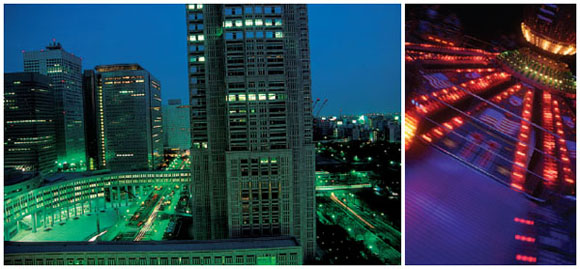
Introduction
Do you ever look at the pictures you see published in books, magazines and calendars and think, I could do better than that? Or stop outside a wedding and portrait studio and say to yourself, my pictures are every bit as good? Or check out the images on an online library and know yours are equally saleable?
Of course you do. It happens to us all. But for many photographers its just a passing thought. Only a small proportion ever take the next step and start shooting for profit. Sometimes thats because they dont have a clue where to begin and how to go about making cash with their camera. Or, sometimes they do submit pictures for possible publication, and their dream takes a knock when they get a rejection slip and they never try again.
But there may have been nothing wrong with their work. Maybe they just sent it to the wrong market or the right market at the wrong time. The truth is, you dont need to be a world-class photographer to become a successful freelancer, you just need to know what pictures are required, who requires them, and when theyre required.
 What this book covers
What this book covers
And thats where this book comes in. Not only have I been a successful freelance photographer and magazine editor for the last 20 years, Ive also interviewed scores of professional and semi-professional photographers. From them Ive learned the secrets of:
- selling direct to magazines, calendar publishers, greetings card manufacturers and newspapers
- making it in commercial, industrial and advertising photography
- shooting stock that sells time and again
- moving from amateur to freelance to professional
- succeeding as a wedding and portrait photographer
And Ive distilled them down to a number of clear, simple principles that anyone can follow and which Ive detailed in the pages to come. So, yes, you could become a freelance or professional photographer. Why not? Youve got your equipment, you can take a decent picture, and all that remains to be sorted out is what are you going to photograph and who is going to buy the pictures.
 Understanding the different terms
Understanding the different terms
In this book, Ill be using a variety of terms to describe people who take pictures. I will cetainly try my best to be consistent in their use throughout.
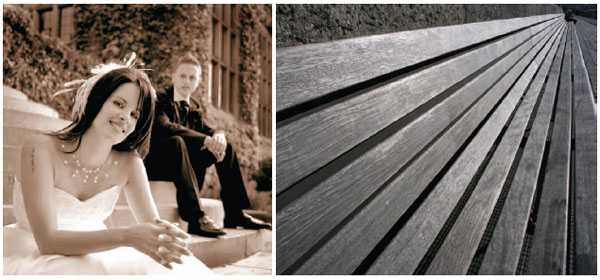
Amateurs take pictures purely for pleasure, with no profit in mind. Often the aim is to capture a moment or record an experience. Amateur is not a judgement of the quality of the work. Amateur does not mean amateurish. Ive seen many pictures taken by amateurs that are every bit as good, and as potentially saleable, as those taken by professionals.
Semi-professional photographers earn some of their income from photography and some from the other work they do. Initially, photography may be a small percentage, maybe as little as 1 per cent, but over time that will often grow, and can become a substantial amount each year.
Many photographers stay semi-professional, not wanting or often not having the courage to go full-time. Some do, though, reach the stage where all their income comes from photography, and they become Professional. While some professionals studied photography at college, and moved straight into full-time work, a large proportion of professionals started as amateurs.
Initially, most photographers are freelance, working for themselves, rather than employed by someone else. When photography is all they do, or they start to have other people work for them, we say a photographer is self-employed or running their own business.
By standard definition, employed photographers work for other people. If you dont feel you have an entrepreneurial talent, or the idea of running your own business really doesnt appeal, then you might consider working for someone else perhaps in a High Street studio or on the staff of a manufacturing or service company.
 Making the transition
Making the transition
Maybe you woke up one morning and decided you wanted to be a photographer. Or perhaps the desire crept up on you over a period of time. What are your options? How do you get started?
Well, simply quitting your job and setting up as a professional photographer is certainly one possibility. And thats what some people do. But think carefully before you hand in your notice.It can take some time to build up a business and you need to be able to pay the bills and feed yourself through that time. If you have family responsibilities, or are cautious by nature, then take it one step at a time.
One option is to start earning money from photography while having another job. Then, when youve built a solid platform and have sufficient business, contacts and potential, quit the 9 to 5. This softly softly approach works in many areas of photography. You can shoot weddings at the weekends, portraits in the evening, and stock and magazine/calendar submissions anytime. However, youre not likely to get commercial, advertising or fashion work as a part-timer.
Next page
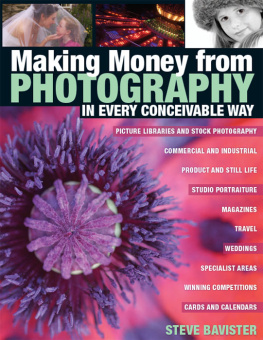
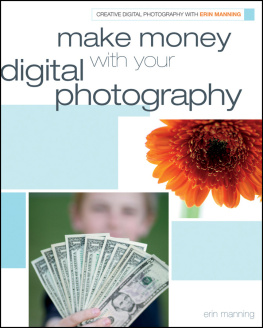
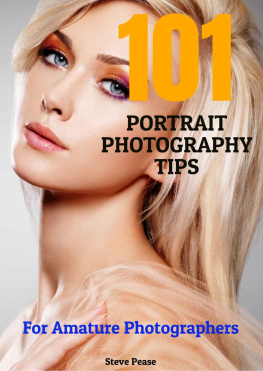
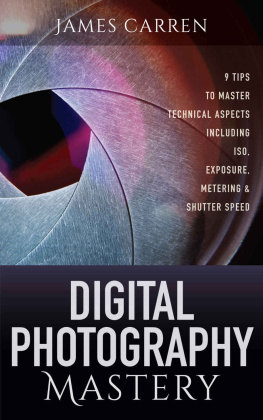
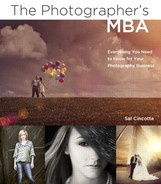

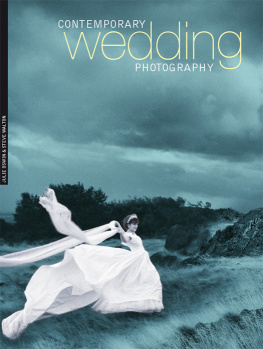
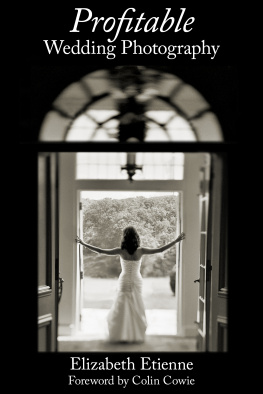
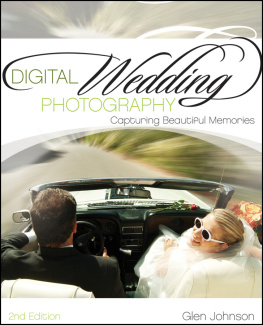
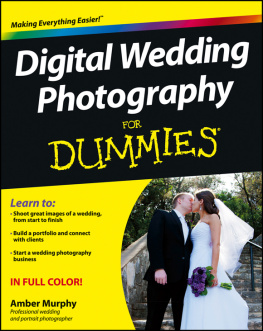

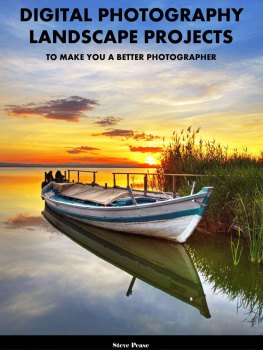


 What this book covers
What this book covers